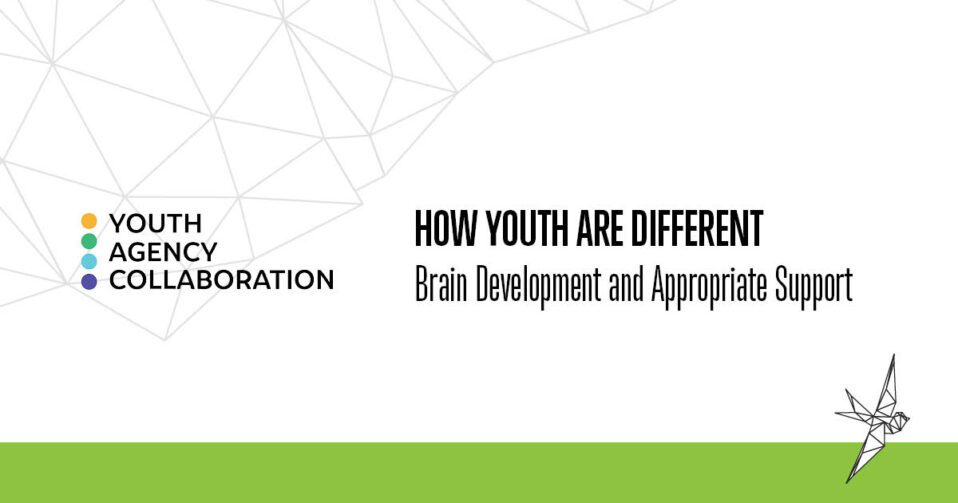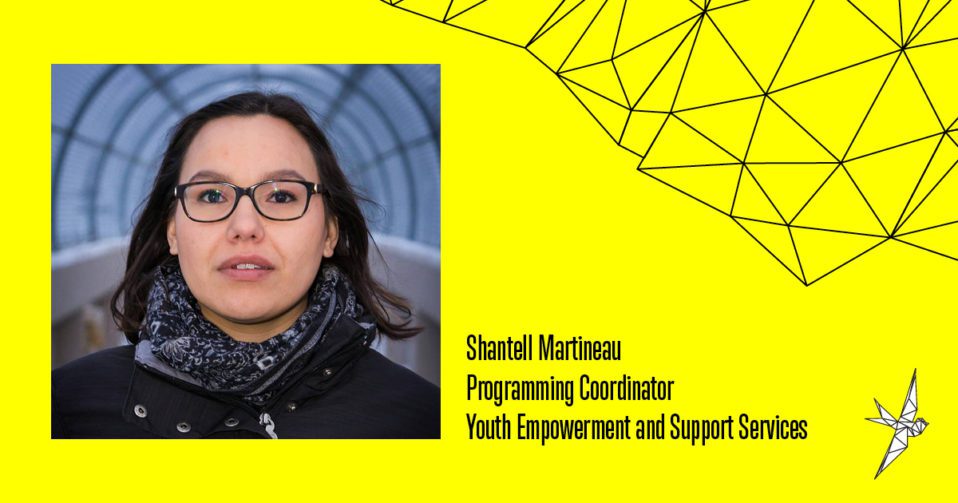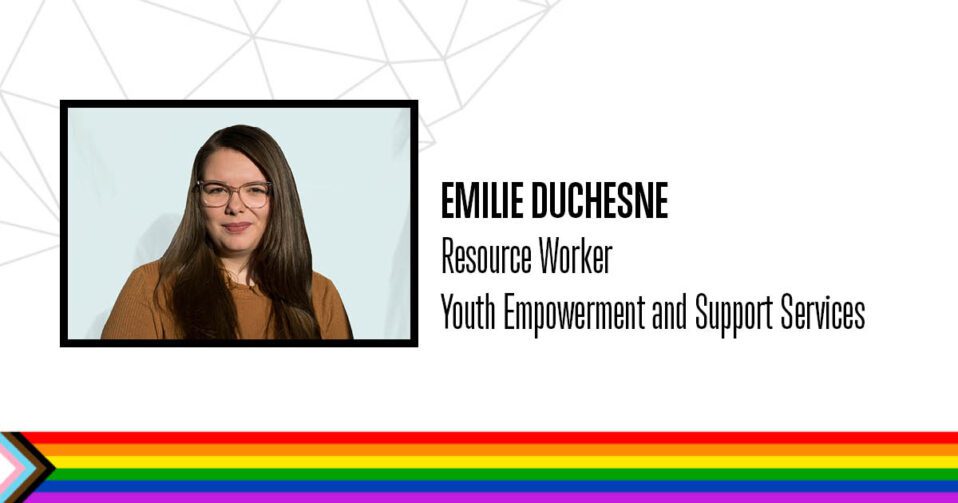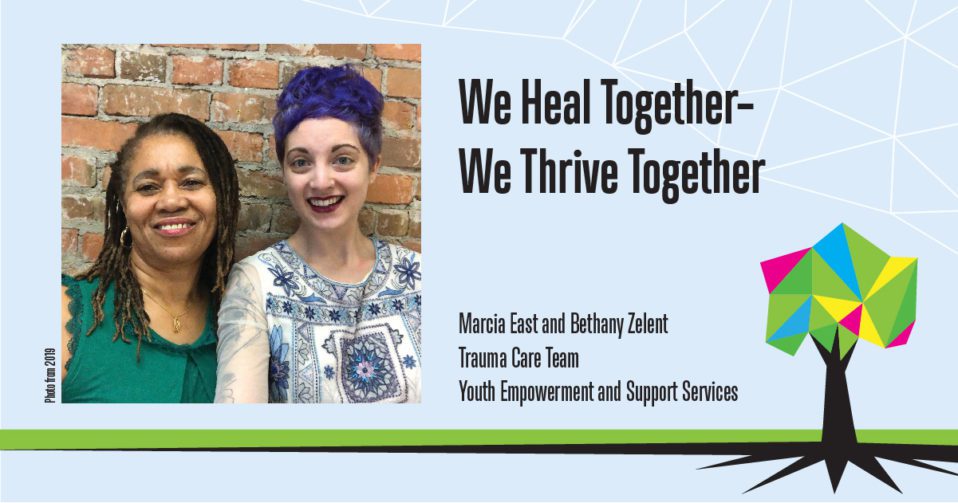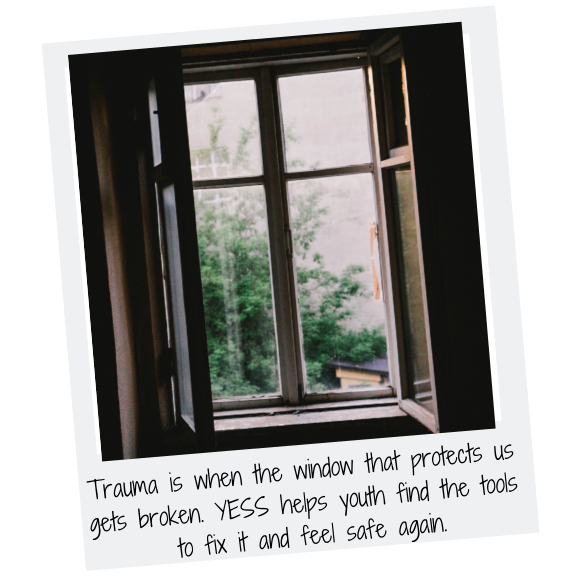This story with our Trauma Care Team was originally published in our Winter 2019 newsletter.
In 2018, we updated our vision to focus on walking beside traumatized youth on their journeys towards healing. In 2019, that vision came closer into focus with the introduction of our own internal Trauma Care Team and we want to introduce you to the incredible folks doing the work of helping our youth heal.
Marcia East has a Master’s in Counselling and Social Work and worked with children, youth, and parents for 12 years in Jamaica. When she moved to Canada in 2015, she started working at YESS in our transitional housing program. In her newest role as part of the Trauma Care Team, Marcia facilitates group and family support sessions.
Bethany Zelent has a Master’s of Counselling and Psychology. For the past four years she has worked as an addictions counsellor and she also has experience working with vulnerable populations and people transitioning out of homelessness. Bethany facilitates individual therapy sessions.
Bethany, you were totally new to the YESS team when you started a few months ago. What brought you to YESS?
After working for so long in addictions it was really inspiring to see people reclaim their life after sometimes twenty, thirty years struggling with addiction, but it was also a little disheartening that people had lost so much of their lives to addiction. I wanted to focus more on prevention, working with people in the early stages because I saw with the women I was working with if they had had intervention in and around the time when the addiction started that they could have been saved a lot of pain. So that was a huge motivation for me to focus more on kids and youth. Also seeing the limbo that youth are in in terms of accessing services. A lot of times they are either too young for services or not bad enough—there’s this weird line where you have to have a certain number of struggles but not so bad that you’re outside an agency’s scope of practice.
How do you feel your work contributes to the YESS vision of walking beside traumatized youth on their journeys towards healing?
BZ: That, to me, is the pinnacle of what we do. I think one of the key words in there for me is “beside,” that we’re not behind, we’re not in front of, and that goes along with our own therapeutic model that the client is the expert in their own life.
ME: Being an ally to youth is a significant part of my own vision in working with people from difficult realities. It is of utmost importance to remember that the population I work with have experiences which are rooted in trauma and, therefore, their behaviours will reflect that truth. I am cognizant of the space that I create for them – one that will facilitate safety and care and encourage movement towards finding the true self.
BZ: There are symptomologies of their traumatized experiences. And that’s what we really target: that trauma is the problem, behaviour is not. Behaviour is a symptom of the trauma. We can do behavioural techniques all day long and they might work on the outside, but there won’t be lasting change because the tree is still rotten. The foundation of it is still trauma. Trauma finds really creative ways to express itself in all sorts of ways.
Marcia, in your role in leading and facilitating group sessions, how have you seen the program evolve over the last few months?
ME: Initially, it was very slow in starting. Now it is becoming a little more stable as group sessions are being offered in the residential programs and youth are warming up to the idea.
Bethany, how have you seen your side of the trauma program—individual counselling—evolve since it started?
BZ: I think there was a healthy level of skepticism from youth at the beginning. The youth have so many reasons not to trust me and I view that as my role, that I have to prove myself as trustworthy. Since we first started there has been a huge level of acceptance from the youth and the staff working together in that. The youth see going to therapy as a viable option for them; they don’t see it as something they have to go somewhere else for. It has become much more normalized, just like going to the doctor is here, just like getting their ID, just like going to the employment program, it’s a very normal thing. One of the best things with therapy, and this is outside of YESS as well, is word-of-mouth advertising. It’s very powerful. I notice that when a few youth would come, more youth would be interested. That is something that’s really important too is for them to be able to say, “I see a change in my friend. I would like that change as well.” I think there’s more openness to taking down the stigma for mental health as well, being able to ask for the help they need, and our regular presence here helps them know that we’re the trauma team.
What’s something you wish the community knew about YESS youth?
BZ: I think one of the biggest things is to remind them that they are youth. That a lot of the behavioural expressions we see are really, really normal for an adolescent to do. It is very normal. Oftentimes because [YESS youth] are in a position of being independent, we kind of project adult expectations onto them, but they physiologically don’t have the brain development to be able to meet those expectations because they are teenagers. A lot of the behavioural expressions that we see like substance use, like stealing—those are all very normal for any adolescent across any socioeconomic status and we cannot hold youth to a higher standard than what their brain can occupy. We certainly can’t hold traumatized individuals to a standard that is higher than what they can actively do and we can’t hold traumatized youth to a standard that’s beyond what their capacity is. I think that’s what I would focus the most on is that they’re still adolescents.
ME: Also that our youth are not “choosing” to remain in difficult situations. They are being impacted by the traumas of their past and they are doing their best to cope with these realities, and are struggling to be resilient despite their history.
Is there a particular remarkable experience you’ve have at YESS?
ME: My most recent remarkable experience comes from working with a youth who struggles with anger issues. I am encouraged by his determination to summon his inner resources for the work he is doing. I am also inspired by the effort and energy he is investing and note how the successes he experiences serve to build his self-efficacy and to further strengthen his resolve.
BZ: In starting therapy I usually ask the client how they feel and then I ask them again at the end so we can track if there’s a change and how our process is going. I started one session with a client who said he felt suffocated from anxiety. He indicated that there was a lot of tension in his chest. We ended up having a two and a half hour session and at the end he said that was the most relaxed he had ever been in his entire life and that he had this feeling of calm where there had been tension. I don’t take any credit for that whatsoever. I think that’s primarily his own work. It is really cool to be a witness to people’s journeys and processes. That he was able to sit with himself for those two and a half hours and attend to himself and be present in a way that he is normally trying to escape. That is amazing.
In the wake of the COVID-19 crisis, there have been some updates to the way the Trauma Care Team works with youth.
The manner in which we offer therapeutic and supportive services have primarily shifted from face-to-face to virtual modalities. For example, individual and group sessions are being carried out through means of video and telephone media, instead of meeting in a physical space. Currently, we have ceased walk-in therapy and new client intakes, as we are trying to figure out the best approach in facilitating these needs within our current context of operations. Program visits have also shifted to using online means, in reaching youth as well.
The difficulty of using online platforms for therapeutic purposes is that it decreases the ability to support youth in a therapeutic space and provide immediate trauma support for panic attacks, emotional regulation and more. The youth are not able to connect as well, via video conference or teleconferencing, which doesn’t allow for the full support they may need in the moment. It is also not easy to build up trust and relationships via video or telephone and therefore, even with this technology available, we are having to adapt our delivery and services to help support the youth who need it.
Every gift of every size is an investment in the future of our community. Together we can create a community where we can all heal together and thrive together.
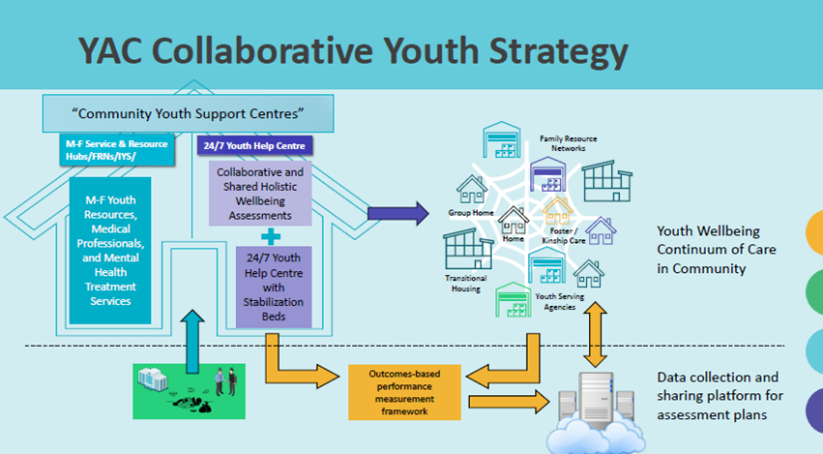 elp (In communities where youth live)
elp (In communities where youth live)
